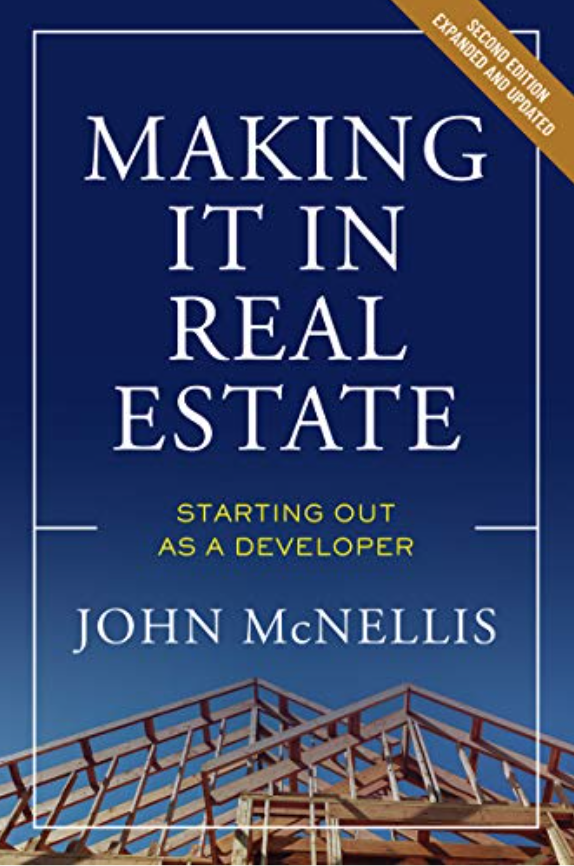Solving E-Commerce’s Challenge to Traditional Retail Comes in Small Packages
Before the Wall Street Journal pontificates again about retail’s demise, about all those tumbling bricks, it might do well to consider e-commerce’s Achilles high-heel: returns. 40 percent of all soft goods—shoes, apparel, accessories, etc.—purchased online are returned. And since going to the post office is like attending new members’ night in hell (without the laughs), that 40 percent reject number is light, failing to take into account the late-night drunk orders tossed in the mistake closet or the Goodwill bin.
Why the crazy returns? It’s not that online shoppers are inept or indecisive—it’s that to date there has been no economic penalty in ordering a pillow in 50 shades of grey and then returning 49. Any given village may have the odd idiot or two, but, taken as a whole, a village is canny and the global village ever more so. When e-commerce has no choice but to offer free returns to compete with tumbling bricks, the villagers swarm.
40 percent of all soft goods—shoes, apparel, accessories, etc.—purchased online are returned
E-commerce’s quandary is elegantly simple: If an e-merchant charges the actual cost of home delivery (about $15) and also charges for or limits returns, its volume will curdle like Waffle House syrup, because the 95 percent of Americans who could really use that $15 will drive to save it. If, on the other hand, the merchant fails to charge these costs, it will one day skitter off its financial runway and jackknife into the sea. Thanks to Wall Street’s baffling patience, Amazon has managed to kick this Catch-22 down the road for two decades (CNBC reported last week that Apple made more money in a single quarter (March 2018) than Amazon has since its inception). But, speaking of canny, the company knows it is supposed to make money and is gradually raising the cost of its Prime membership (the principal benefit of which is free home delivery) from $99 a year to $119. This price increase may take Amazon out of its own end zone but not much farther; $119 will only cover about 8 deliveries, what a dedicated Amazonian orders in a couple of weeks.
As long as bricks retailers are willing to offer their inventory at online prices (they are—that Rubicon was long since crossed), they will win back their consumers when e-commerce is at last forced to be actually profitable, that is, to pass on its full costs. But the brickers have their own dilemma: They cannot possibly stock the universe of items obtainable online or come remotely close to competing on selection. They will lose every time a shopper desires even a slightly arcane item or size.
Thus, we have two warriors in a locked cage fight, each capable of killing the other, but incapable of surviving the struggle. If not to the business press, the solution has been clear to the retail world for several years. Like the Union Pacific and Central Pacific railroads connecting the continent in 1869, Wal-Mart and Amazon will soon enough put the final spike in the heart of traditional retail by meeting somewhere between the net and the mall, with Wal-Mart fully Amazon’s rival online and Amazon with 3,000 stores, both companies seamlessly then allowing purchases anytime and returns anywhere.
And therein lies, if not the solution, then the best approach to the 40 percent return problem. Retail’s North Star is convenience. Simple convenience. Today that convenience revolves around two opposing poles. Every one of us buys on-line when we know what we want, because it’s so much more convenient than going to the mall; conversely, we all return in-person because the post office is where Einstein developed his theory about the elasticity of time.
This is how the biggest, best retailers—those who embrace what the pundits oddly call the Omni-channel approach—will go medieval on the little guys in the business, those who cannot possibly have thousands of locations for conveniently dropping off returns.
That is, unless a fun, little start-up called Happy Returns delivers on its promises. Creatively attempting to bridge—and monetize—this gulf between online buy and in-person return, the company looks like it will be a godsend to both pure-play e-commerce companies and shopping centers. Here’s its pitch: Buy online from your favorite e-tailer, and when—sure enough—you finally decide to return those jeans that wouldn’t have fit you 10 years ago, drive to the Happy Returns kiosk at the mall and get an instant 100 percent credit for your purchase price. You don’t need the original box or even the receipt; as long as the jeans are in new condition, Happy Returns accepts and sends them to the e-merchant, all at no charge to you. In short, the company acts as the online merchant’s physical store for returns. And the mall? The mall not only gets you to visit, but to visit at the moment you just had your credit card reloaded (what most of us think of as a raise) and, by having its other tenants cut tie-in, coupon and discount deals with Happy Returns, it gets you to shop far and wide.
At the risk of jinxing this start-up company (your correspondent is notoriously bad at predicting retail success), this seems like the best idea in retail since the nickel ice cream cone.


